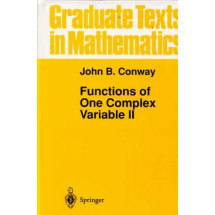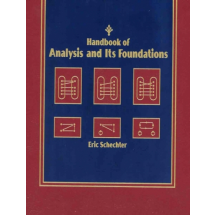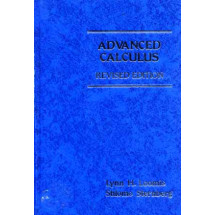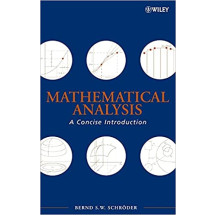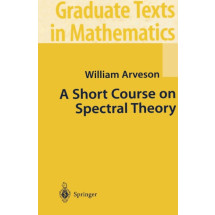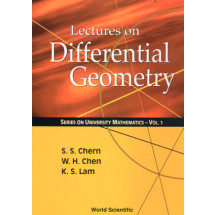Foreword vii
Introduction xv
Chapter 1. Preliminaries to Complex Analysis 1
1 Complex numbers and the complex plane 1
1.1 Basic properties 1
1.2 Convergence 5
1.3 Sets in the complex plane 5
2 Functions on the complex plane 8
2.1 Continuous functions 8
2.2 Holomorphic functions 8
2.3 Power series 14
3 Integration along curves 18
4 Exercises 24
Chapter 2. Cauchy's Theorem and Its Applications 32
1 Goursat's theorem 34
2 Local existence of primitives and Cauchy's theorem in a disc 37
3 Evaluation of some integrals 41
4 Cauchy's integral formulas 45
5 Further applications 53
5.1 Morera's theorem 53
5.2 Sequences of holomorphic functions 53
5.3 Holomorphic functions defined in terms of integrals 55
5.4 Schwarz reflection principle 57
5.5 Runge's approximation theorem 60
6 Exercises 64
7 Problems 67
Chapter 3. Meromorphic Functions and the Logarithm 71
1 Zeros and poles 72
2 The residue formula 76
2.1 Examples 77
3 Singularities and meromorphic functions 83
4 The argument principle and applications 89
5 Homotopies and simply connected domains 93
6 The complex logarithm 97
7 Fourier series and harmonic functions 101
8 Exercises 103
9 Problems 108
Chapter 4. The Fourier Transform 111
1 The class F 113
2 Action of the Fourier transform on F 114
3 Paley-Wiener theorem 121
4 Exercises 127
5 Problems 131
Chapter 5. Entire Functions 134
1 Jensen's formula 135
2 Functions of finite order 138
3 Infinite products 140
3.1 Generalities 140
3.2 Example: the product formula for the sine function 142
4 Weierstrass infinite products 145
5 Hadamard's factorization theorem 147
6 Exercises 153
7 Problems 156
Chapter 6. The Gamma and Zeta Functions 159
1 The gamma function 160
1.1 Analytic continuation 161
1.2 Further properties of T 163
2 The zeta function 168
2.1 Functional equation and analytic continuation 168
3 Exercises 174
4 Problems 179
Chapter 7. The Zeta Function and Prime Number Theorem 181
1 Zeros of the zeta function 182
1.1 Estimates for 1/s(s) 187
2 Reduction to the functions v and v1 188
2.1 Proof of the asymptotics for v1 194
Note on interchanging double sums 197
3 Exercises 199
4 Problems 203
Chapter 8. Conformal Mappings 205
1 Conformal equivalence and examples 206
1.1 The disc and upper half-plane 208
1.2 Further examples 209
1.3 The Dirichlet problem in a strip 212
2 The Schwarz lemma; automorphisms of the disc and upper half-plane 218
2.1 Automorphisms of the disc 219
2.2 Automorphisms of the upper half-plane 221
3 The Riemann mapping theorem 224
3.1 Necessary conditions and statement of the theorem 224
3.2 Montel's theorem 225
3.3 Proof of the Riemann mapping theorem 228
4 Conformal mappings onto polygons 231
4.1 Some examples 231
4.2 The Schwarz-Christoffel integral 235
4.3 Boundary behavior 238
4.4 The mapping formula 241
4.5 Return to elliptic integrals 245
5 Exercises 248
6 Problems 254
Chapter 9. An Introduction to Elliptic Functions 261
1 Elliptic functions 262
1.1 Liouville's theorems 264
1.2 The Weierstrass p function 266
2 The modular character of elliptic functions and Eisenstein series 273
2.1 Eisenstein series 273
2.2 Eisenstein series and divisor functions 276
3 Exercises 278
4 Problems 281
Chapter 10. Applications of Theta Functions 283
1 Product formula for the Jacobi theta function 284
1.1 Further transformation laws 289
2 Generating functions 293
3 The theorems about sums of squares 296
3.1 The two-squares theorem 297
3.2 The four-squares theorem 304
4 Exercises 309
5 Problems 314
Appendix A: Asymptotics 318
1 Bessel functions 319
2 Laplace's method; Stirling's formula 323
3 The Airy function 328
4 The partition function 334
5 Problems 341
Appendix B: Simple Connectivity and Jordan Curve Theorem 344
1 Equivalent formulations of simple connectivity 345
2 The Jordan curve theorem 351
2.1 Proof of a general form of Cauchy's theorem 361
Notes and References 365
Bibliography 369
Symbol Glossary 373
Index 375


